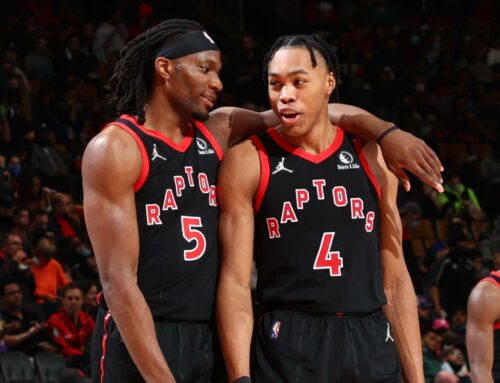***This post is Part I of a series discussing the importance of shooting and developing a good shot.
The concept of scoring in basketball is quite simple. The closer you are to the basket, the easier it is to score. The further out you are, the more the laws of gravity and motion play a role – and, trust me, you do not want to contend with them.
The problem is: you know, and your defender knows, that you want to get as close to the hoop as you can. And, voilà, you have the game of basketball!
So, then comes the creativity. The ways in which you can outsmart your opponent to find the shot you want.
There is the unpredictability of the jump shot and the floater. The athleticism of the fadeaway and the dunk. The unreachability of the three-pointer and step-back. Master them all and a headache you will be for many, many coaches.
Shooting has always been an integral part of basketball, but, in recent years, the game has evolved in ways that make it all the more important.
First, is the obvious. Three-pointers are worth more than two-pointers. Teams realized that they could shoot a worse percentage from three at a lesser volume than two and still outscore teams (for example: 3/7 [43%] from three is more points than 4/8 [50%] from two). Second, pick and roll became more popular and effective. Defences counter pick and rolls by sending help or clogging the paint. If the team using the pick and roll has shooters at the ready, defences have to pick their poison: help on the pick and roll or allow an uncontested three-pointer.
Most teams in the NBA use one or both of these approaches. Look at the numbers in the table below. EVERY TEAM shot more threes this year than the seven highest shooting teams in 2009-2010. And, this year, twice as many teams committed twenty percent of their possessions to the pick and roll than in 2015-2016.
| Year | Number of Teams | Three-Point Attempts Per Game | Pick and Roll Usage Per Game (%) |
|---|---|---|---|
| 2009-2010 | 7 | 23 | – |
| 2019-2020 | 30 | 25 | – |
| 2015-2016 | 6 | – | 20 |
| 2019-2020 | 12 | – | 20 |
Every player – big and small – must be able to space the floor. Think of the diverging paths of NBA centres Robin Lopez and Brook Lopez. Brook was always more skilled than his twin brother, but their size and position were identical (literally). They were lumbering big men roaming the paint. Then, Brook Lopez transformed into an excellent three point shooter (for the last three years he has averaged nearly two threes a game). Robin did not (he averaged 0.3 threes a game in the same period of time).
Brook symbolized the NBA’s transition into space and pace. Robin represented a dying breed.
SHOOTING elevated Brook’s career. SHOOTING (or a lack thereof) undercut Robin’s.
Even for elite NBA players, it has never mattered less to be an other-worldly athlete (see Russell Westbrook and Ben Simmons) or a mid-range ninja (see DeMar DeRozan and LaMarcus Aldridge) without a three-point shot.
That is not to say that three-point shooting is everything. At the levels most of us play, it is not.
But what this does prove is that you must have a good shot. Coaches are looking for guys who can splash at every range. They know that even if you have not found a three-point stroke, with the proper mechanics, it will come with (lots of) practice.
And so it all comes back to your form!
Your FORM! No font style can emphasize this enough.
A broken shot will limit your potential as a player. A perfect shot can take you very, very far.
***In the following posts, we will discuss individual shooting mechanics and dive deeper into the specific mechanics that will help you develop a great shot.





